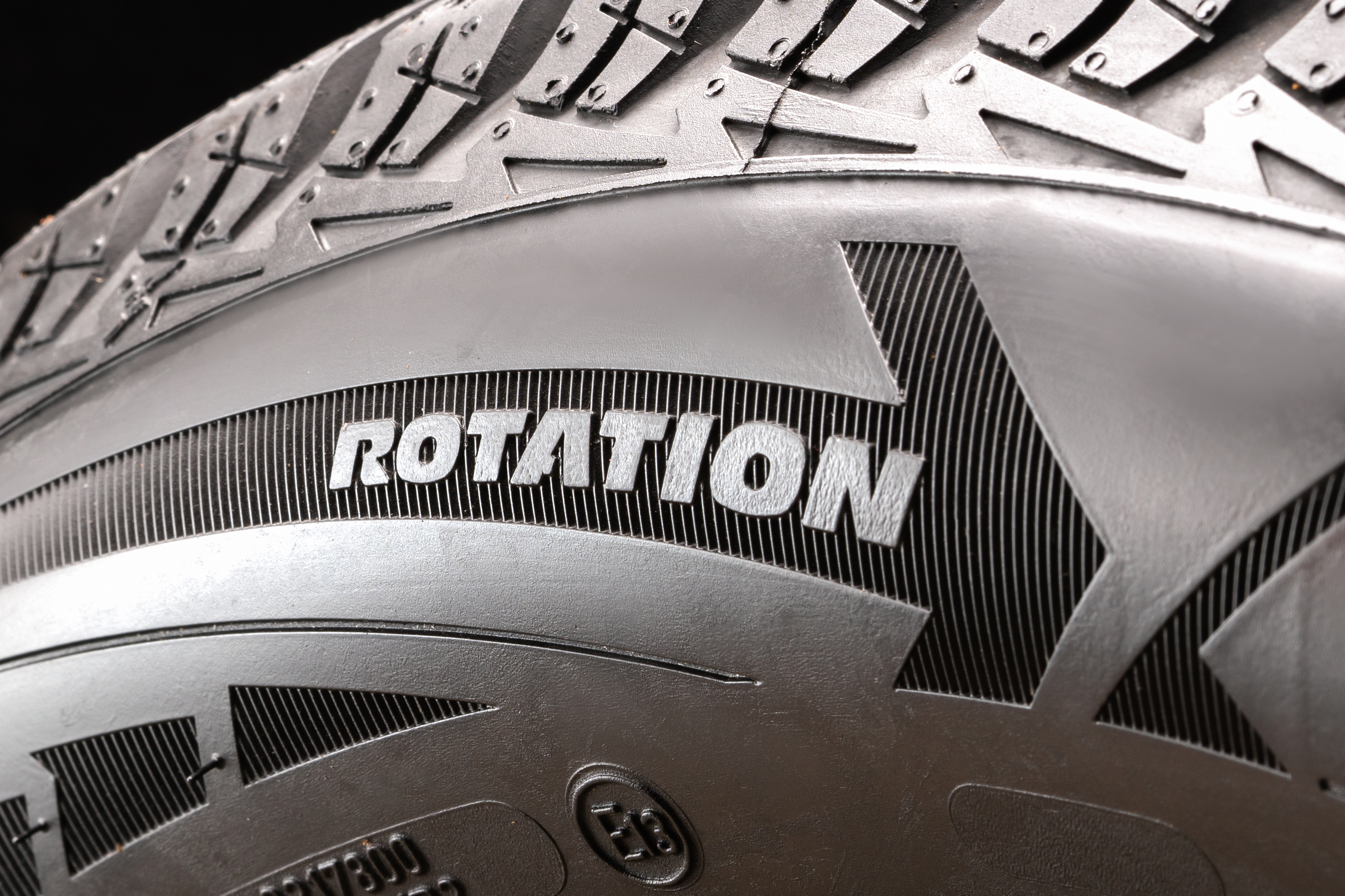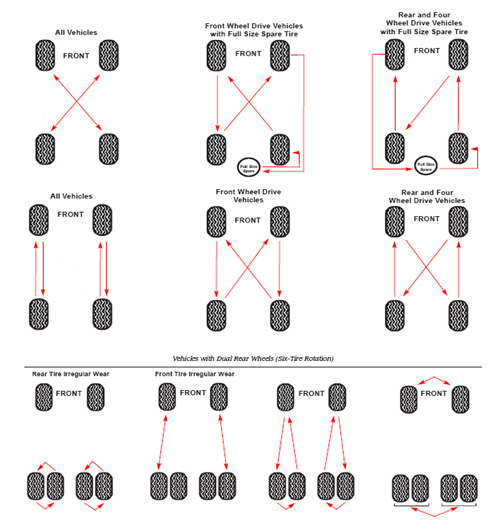Your Shopping Cart
Your cart is empty.
Subtotal ( items)
Instant Rebate Applied:
Promo Code Applied:
Have a Promo Code?
Size:
Item
Item
Selected for:
/ each
Add-Ons
Wireless air pump capable of pumping up to 150 psi with 2000 MAH power bank.



Fully protect your clothes and vehicle interior during transportation of your tires. For Tires up to 31" tall and wheels up to 22".
Per sensor
Add TPMS Sensors
/per sensor
Please confirm the make, year, model and trim of the vehicle you want to purchase for:
How many sensors do you need?
The vehicle you have selected is not compatible with aftermarket TPMS Sensors.
Enter a different vehicle to add TPMS sensors

 Front Tire Size:
Front Tire Size:
 Rear Tire Size:
Rear Tire Size:
 Your Vehicle:
Your Vehicle:
Pros & Cons of Staggered Fitment

Attractive Design

Improved Handling

Improved Cornering
Bumpier Ride
Poor Traction in Snow
How do I find my tire size?



Need help?
 Your Vehicle:
Your Vehicle:
Pros & Cons of Staggered Fitment

Attractive Design

Improved Handling

Improved Cornering
Bumpier Ride
Poor Traction in Snow
How do I find my tire size?



Need help?
Pros & Cons of Staggered Fitment

Attractive Design

Improved Handling

Improved Cornering
Bumpier Ride
Poor Traction in Snow
Need help?
Need help?
How do I know if I have an LT tire?

 Your Vehicle:
Your Vehicle:
Sorry, we could not find any available
wheels for your sizing selections.
Need help?
All About Tire and Wheel Rotation
By Tire Agent Staff
April 25, 2022
You may have heard the term “rotate your tires” thrown in with other periodic car maintenance tasks, but what does this actually mean?
Tire rotation is when you remove the wheels from your car axle and reposition them in different places on your car. For example, moving the tires in the back of your car to the front. Because you’re not removing the tire from its rim assembly, it’s more accurate to think of it as wheel rotation.
So why do you need to do this?
Most cars don’t distribute their weight evenly on your wheels. This means that over time, certain wheels will experience a more concentrated strain on their tire treads. Front-wheel drive cars will put more strain on the front tires, as they receive more torque and friction as you accelerate and brake.
Periodically rotating your wheels ensures that your tread wear is uniform across all four tires' treads. That way, you can extend the lifetime of your tires and won’t have to replace one or two tires due to concentrated wear in a particular area.
If you’re comfortable changing your tires and have access to a tire jack, you can look into rotating your tires on your own. However, many stores offer tire rotation as a service when you’re getting your oil changed.
How Often Should You Rotate Tires?
Most car experts will have you rotate your tires every 5,000 to 8,000 miles, or roughly when you get your oil changed. Check your owner's manual for guidance on how often you should rotate. Rotating at a shop also provides an opportunity for a professional to inspect your tires for damage.
Another contributing factor is whether your car is front-, rear-, or all-wheel drive. This affects which tires are receiving the most strain when driving and braking.
The season change from winter to spring can be a good time to rotate your tires if you don’t drive as many miles over long periods of time. If you live in an area with snowy winters, you should be inspecting your tires for damage anyway around this time.
Tire Rotation Chart
Tire rotations refer to what position your tires are being swapped to. The correct way to rotate your tires is dependent on which wheels your car uses to drive and is represented using the following charts:
SOURCE: Cooper Tire (Shop Tire Agent for Cooper Tires)
Moving your tires using these charts ensures the tires receiving the most strain from your car are moved to a less strained position. For front-wheel drive (FWD) and rear-wheel drive (RWD) vehicles, this is simply exchanging your front wheels for the back ones.
However, for all-wheel drive (AWD) and four-wheel drive (4WD) cars, it’s a bit more complicated. These vehicles also need a tire rotation. The pattern you use is dependent on how you tend to drive. Many AWD and 4WD systems electronically shift power between front and rear, depending on your selected gear settings and the condition of the road. You’ll need to factor in what settings you tend to drive on, as well as consult the owner's manual for the recommended rotation pattern.
What Are Directional Tires vs Non-Directional Tires?
There’s an exception to the tire rotation pattern if you have asymmetrical tires or non-directional tires. These tires have treads that are designed to perform optimally by going in one direction when mounted in a specific position.
You can tell that you have directional tires by whether the tread will look like an arrow or V shape that points in the direction your tire rotates. The benefit of having directional tires is the increased traction and performance on wet and dry roads.
Directional tires have a more complicated tire rotation. In most cases, you can rotate your tires front to back on the same side, so they’re still facing the correct direction. If your directional tires or wheels are different sizes in the front and rear, you will have to remove the tires from their wheels in order to flip and remount them in the correct placement.
What Is Tire Balancing, And Do You Need to Balance Tires After Rotation?
Tire balancing ensures that your tires have the correct distribution of weight. Tire balancing is performed with a specialized machine that spins the tire and wheel assembly to measure imbalance. Small lead weights are attached to the rim of the wheel based on the data received to ensure your wheels are balanced.
Unbalanced wheels will cause your car to vibrate and can eventually lead to excessive wear and damage. If you notice your car rotating in a specific area — like the back seats or the front dashboard — it can help you find which tire needs to be balanced.
Tires balancing usually happens alongside rotation as the wheels are being removed from your vehicle anyway, but can also be done every other time you have your oil changed. If you’ve recently had a flat tire repaired, it can be a good idea to also schedule a tire balancing to ensure everything is still running smoothly.


